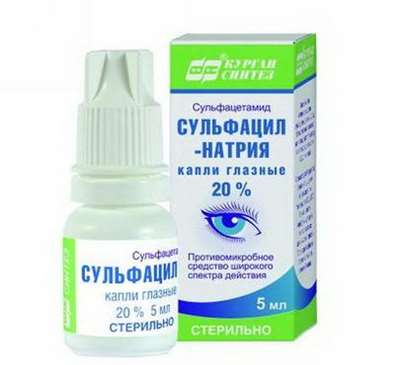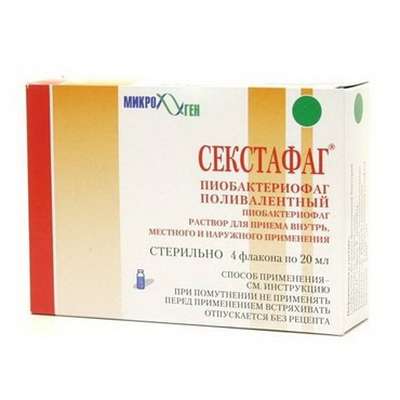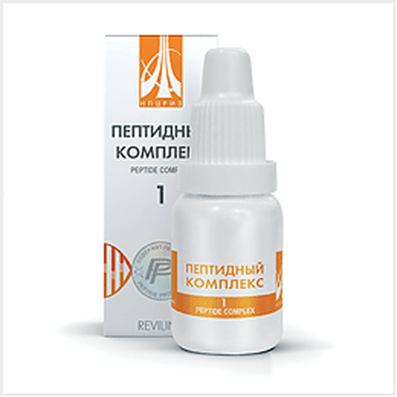Instruction for use: Alka-Seltzer
I want this, give me price
Active substance Acetylsalicylic acid + [Citric acid + Sodium hydrocarbonate]
ATX code N02BA51 Acetylsalicylic acid in combination with other drugs, except for psycholeptics
Pharmacological groups
NSAIDs - Salicylic acid derivatives in combinations
Nosological classification (ICD-10)
G43 Migraine
The pain of migraine, Migraine, hemiplegic migraine, Migraine headache, A migraine attack, Continuous headache, hemicrania
J06 Acute upper respiratory infections of multiple and unspecified
Frequent colds viral diseases, Infections of the upper respiratory tract, Acute respiratory disease influenza character, for colds Pain, Acute colds,Cold, respiratory infection,Seasonal colds, Pain in infectious and inflammatory diseases of the upper respiratory tract, Bacterial infections of the upper respiratory tract, Bacterial respiratory infections, Viral disease of the respiratory tract, Viral respiratory tract infections, Inflammatory disease of the upper respiratory tract, Inflammation of the upper respiratory tract disease, Inflammation of the upper respiratory tract illness with difficult sputum, Inflammatory airway disease, Secondary infections with colds, Shortness of sputum in acute and chronic respiratory diseases, Upper respiratory tract infection, Infections of the upper respiratory tract, Respiratory Tract Infections, Infections of the respiratory tract and lungs, Infectious-inflammatory diseases of the upper respiratory tract, Infectious-inflammatory diseases of the upper respiratory tract and ENT-organs, Infectious-inflammatory diseases of the upper respiratory tract in children and adults, Infectious-inflammatory diseases of the upper respiratory tract, Infectious inflammation of the airways,respiratory infection, Qatar upper respiratory tract, Catarrh of the upper respiratory tract, Catarrhal disease of the upper respiratory tract, Catarrhal symptoms of the upper respiratory tract, Coughing with a cold, SARS, ARI, ARI with rhinitis phenomena, Acute respiratory infection, Acute infectious and inflammatory disease of the upper respiratory tract, Acute respiratory disease, Sore throat or nose, Respiratory viral infections, Respiratory diseases, Respiratory infections, Recurrent respiratory infections, Secondary infection with influenza, cold in the chest, Feverish condition with flu usitis, acute sinusitis, genyantritis, purulent sinusitis
K08.8.0 * Painful toothache
Dentinal pain, Dentinal pains, Pain pulpitis, Anesthesia in dentistry, Pain syndromes in dental practice, Pain after removal of tartar, Pain when extracting a tooth, Toothache, Pain after dental interventions
M25.5 Pain in the joint
Arthralgia, Pain syndrome in musculo-articular diseases, Pain syndrome in osteoarthritis, Pain syndrome in osteoarthritis, Pain syndrome in acute inflammatory diseases of the musculoskeletal system, Pain syndrome in chronic inflammatory diseases of the musculoskeletal system, Pain in the joints, Soreness of the joints, Soreness of joints in severe physical exertion, Painful inflammatory joint damage, Painful conditions of the musculoskeletal system, Painful joint conditions, Painful traumatic affection of joints, Pain in the musculoskeletal system, Pain in Shoulder Joints, Pain in the joints, Joint pain, Joint pain with injuries, Musculoskeletal pain, Pain with osteoarthritis, Pain in the pathology of the joints, Pain in rheumatoid arthritis, Pain in chronic degenerative bone diseases, Pain in chronic degenerative joint diseases, Bone-joint pain, Joint pain, Arthritic pain of rheumatic origin, Articular pain syndrome, Joint pain, Rheumatic pain, Rheumatic pains
M79.1 Myalgia
Myofascial pain syndromes ,Pain syndrome in musculo-articular diseases, Pain syndrome in chronic inflammatory diseases of the musculoskeletal system, Pain in the muscles, Tenderness of muscles, Muscular soreness in severe physical exertion, Painful conditions of the musculoskeletal system, Pain in the musculoskeletal system, Pain in the muscles, Pain at rest, Muscle aches, Muscle pain, Musculoskeletal pain, Myalgia, Muscle pain, Muscle pain at rest, Muscle pain, Muscular pain of non-rheumatic origin, Muscle pain of rheumatic origin, Acute muscle pain, Rheumatic pain, Rheumatic pains, Myofascial syndrome, Fibromyalgia
N94.6 Dysmenorrhea Unspecified
Pain during menstruation, Functional disorders of the menstrual cycle, Menstrual cramps, Emmeniopathy, Pain during menstruation, Painful menstrual irregularities, algomenorrhea, algomenoreya, Pain smooth muscle spasm, Pain spasm of smooth muscles (renal and biliary colic, intestinal spasms, dysmenorrhea), Pain spasm of smooth muscles of internal organs (kidney and biliary colic, intestinal spasms, dysmenorrhea), Disalgomenoreya, dysmenorrhea, Dysmenorrhea (essential) (Exfoliative), menstrual disorder, menstruation painful, metrorrhagia, Violation of the menstrual cycle, Menstrual irregularities, Prolaktinzavisimoe menstrual disorders, Prolaktinzavisimoe menstrual dysfunction, Pain spasm of smooth muscles of internal organs, Spasmodic dysmenorrhea, Primary disalgomenoreya
R07.0 Sore throat
A sharp pain in the throat, Sore throat
R50.0 Fever with chills
High fever, Heat, Chills, elevated temperature, hyperthermia, Prolonged fever, Feverish syndrome, Fervescence, Increased body temperature in infectious and inflammatory diseases, fever Symptoms, febrile syndrome, Febrile state, Fever, Fever in infectious and inflammatory diseases, Fever with SARS, Fever with cold, Fever for colds, febrility, Feverish condition with flu, Feverish state in infectious and inflammatory diseases , Feverish state of infectious diseases and in the postoperative period, Feverish condition for colds, Febrile of different genesis, Feverish syndrome on the background of infectious diseases, Feverish syndrome in infectious and inflammatory diseases, Feverish syndrome with colds, Feverish syndrome of different genesis, Increased temperature for colds, Increased temperature at catarrhal and infectious and inflammatory diseases, Increased body temperature in cold, etc., Increased body temperature in cold and other infectious and inflammatory diseases, Increased body temperature in cold and other infectious and inflammatory diseases, Fever during pregnancy, Fever with thrombocytopenia, Febrile reaction in blood transfusion
R51 Headache
Pain in the head, Cephalgia, Pain with sinusitis, Pain in the back of the head, Painful headache, Headache of vasomotor genesis, Headache of vasomotor origin, Headache with vasomotor disorders, Headache, Neurological headache, Serial headache
Composition and form of release
Tablets effervescent 1 table.
acetylsalicylic acid 324 mg
citric anhydrous acid 965 mg
sodium carbonate monosubstituted 1625 mg
excipients: povidone 25; siloxane / silicate; doss sodium bisoate; sodium saccharinate; flavorings - lemon and lime
in a strip of 2 pcs., in a pack of cardboard 5 strips or in a strip of 10 pcs., in a pack of cardboard 1 or 2 strip.
Description of dosage form
Round, flat tablets of white color, on one side engraving "ALKA SELTZER", in a convex circle around the perimeter; on the other is a chamfer.
pharmachologic effect
Pharmacological action - anti-inflammatory, antipyretic, antiaggregational, analgesic, antacid.
Pharmacodynamics
Combined drug, the effect of which is due to its constituent components.
Acetylsalicylic acid has an analgesic, antipyretic, anti-inflammatory effect, which is due to inhibition of COX enzymes involved in the synthesis of PG. Acetylsalicylic acid inhibits platelet aggregation by blocking the synthesis of thromboxane A2.
Sodium carbonate neutralizes free hydrochloric acid in the stomach, which reduces the irritant effect of the drug.
Citric acid promotes a faster absorption of the drug.
Indication of the drug Alka-Seltzer
symptomatic treatment of pain syndrome - headache (including after excessive consumption of alcohol), toothache, sore throat, back and muscle pain, joint pain, menstruation pain;
elevated body temperature for colds and other infectious-inflammatory diseases (in adults and children over 15 years old).
Contraindications
hypersensitivity to acetylsalicylic acid and other NSAIDs or other components of the drug;
erosive and ulcerative lesions of the gastrointestinal tract (in the phase of exacerbation);
hemorrhagic diathesis;
combined use of methotrexate in a dose of 15 mg per week or more;
asthma caused by the intake of salicylates or other NSAIDs;
pregnancy (I and III trimester);
the period of breastfeeding;
children under 15 with ARI caused by viral infections, because of the risk of developing Reye's syndrome (encephalopathy and acute fatty liver disease with acute development of liver failure).
Carefully:
concomitant therapy with anticoagulants;
gout;
peptic ulcer of stomach and / or duodenum (in the anamnesis), including chronic or recurrent ulcer disease, or episodes of gastrointestinal bleeding;
renal and / or liver failure;
deficiency of glucose-6-phosphate dehydrogenase.
pregnancy and lactation
Contraindicated in I and III trimesters of pregnancy.
If you need to use the drug during lactation, breastfeeding should be discontinued.
Side effects
Sometimes it is possible:
From the gastrointestinal tract: abdominal pain, heartburn, nausea, vomiting, obvious (vomiting with blood, tarry stool) or hidden signs of gastrointestinal bleeding, which can lead to iron deficiency anemia, erosive-ulcerative lesions (in including perforations) GIT, isolated cases - violations of the liver (increased liver transaminases).
From the hemopoietic system: increased risk of bleeding, which is a consequence of the effect of acetylsalicylic acid on platelet aggregation.
Allergic reactions: skin rash, anaphylactic reactions, bronchospasm, Quincke's edema.
When such symptoms appear, it is recommended to stop taking the drug and immediately consult a doctor.
Interaction
Joint application:
- with methotrexate at a dose of 15 mg per week or more: the hemolytic cytotoxicity of methotrexate is increased (decreased renal clearance of methotrexate and methotrexate is replaced by salicylates due to blood plasma proteins);
- with anticoagulants, for example heparin: the risk of bleeding increases due to the inhibition of platelet function, damage to the gastrointestinal mucosa, the displacement of anticoagulants (oral) from the connection with plasma proteins;
with other NSAIDs, as well as with high doses of salicylates (3 g per day or more): as a result of synergistic interaction, the risk of ulceration and bleeding increases;
- with uricosurates, for example benzbromarone: reduces the uricosuric effect;
- with digoxin: the concentration of digoxin is increased due to decreased renal excretion;
- with antidiabetic drugs, for example insulin: the hypoglycemic effect of antidiabetic drugs increases due to hypoglycemic action of acetylsalicylic acid;
- with preparations of thrombolytics group: the risk of bleeding increases;
- with diuretics at a dose of 3 mg per day or more: glomerular filtration decreases due to a reduction in the synthesis of PG;
- with systemic SCS, excluding hydrocortisone, used as a substitute therapy for Addison's disease: with the use of GCS, the level of salicylates in the blood decreases by increasing the excretion of the latter;
- with ACE inhibitors: at a dose of 3 g per day and more glomerular filtration is reduced by inhibition of PG and, as a consequence, the antihypertensive effect decreases;
- with valproic acid: the toxicity of valproic acid is increased;
- with ethanol: the risk of damaging effects on the gastrointestinal mucosa increases and the bleeding time increases.
Dosing and Administration
Inside, previously dissolved in a glass of water.
Adults and children over 15 years of age - 1 table. up to 6 times a day. For severe pain and high fever - 2-3 tablets; the maximum daily dose should not exceed 9 tablets. (3 g).
The interval between doses of the drug should be at least 4 hours. Regular adherence to the regimen of taking the drug avoids a sharp increase in temperature and reduces the intensity of the pain syndrome.
The duration of treatment (without consulting a doctor) should not exceed 5 days when prescribed as an anesthetic and more than 3 days - as an antipyretic.
Overdose
Symptoms: with an overdose of moderate severity - nausea, vomiting, tinnitus, hearing loss, headache, dizziness and confusion. These symptoms occur with a decrease in the dose of the drug.
Severe overdose: fever, hyperventilation, ketosis, respiratory alkalosis, metabolic acidosis, coma, cardiogenic shock, respiratory failure, severe hypoglycemia.
Treatment: symptomatic therapy, hospitalization, lavage, the use of activated charcoal, monitoring of acid-base balance, alkaline diuresis, in order to obtain a urine pH between 7.5-8 (forced alkaline diuresis is achieved if the concentration of salicylate in the blood plasma is more than 500 mg / l - (3.6 mmol / l, in adults or 300 mg / l - 2.2 mmol / l, in children), hemodialysis, fluid loss compensation.
special instructions
Acetylsalicylic acid can cause bronchospasm, an attack of bronchial asthma or other hypersensitivity reactions.
Risk factors are the presence of bronchial asthma, polyps of the nose, fever, chronic bronchopulmonary diseases, cases of allergy in the history (allergic rhinitis, rashes on the skin).
Acetylsalicylic acid can increase the tendency to bleeding, which is due to its inhibitory effect on platelet aggregation. This should be taken into account when necessary surgical interventions, including such minor interventions as tooth extraction. Before surgery, to reduce bleeding during surgery and in the post-operation period, you should cancel taking the drug for 5-7 days and inform the doctor.
If you need to use the drug during lactation, breastfeeding should be discontinued.
Children should not be prescribed drugs containing acetylsalicylic acid, because in the case of a viral infection, the risk of developing Reye syndrome increases. Symptoms of Reye's syndrome include prolonged vomiting, acute encephalopathy, and enlargement of the liver.
In the treatment of vascular diseases, the daily dose of acetylsalicylic acid is 75 to 300 mg.
Acetylsalicylic acid reduces the excretion of uric acid from the body, which can cause an acute attack of gout in predisposed patients.
In one effervescent tablet of the drug Alka-Seltzer contains 445 mg of sodium, which should be considered in a diet with controlled sodium intake.
There was no evidence of the effect of drug administration on vehicle management and other mechanisms.
storage Conditions
At a temperature of no higher than 25 ° C.
Keep out of the reach of children.
Shelf life
3 years.
Do not use after the expiry date printed on the package.

 Cart
Cart





